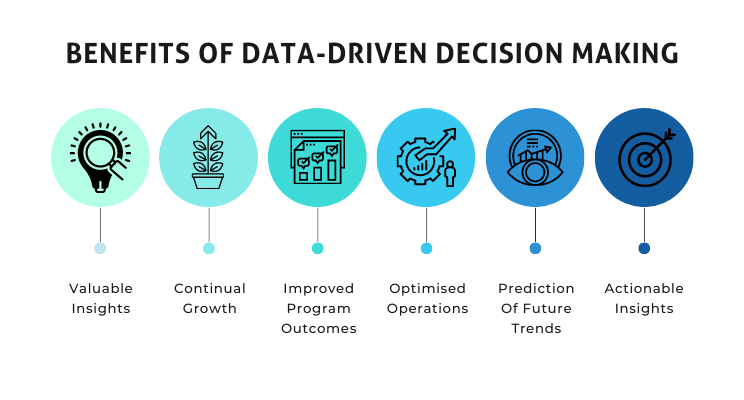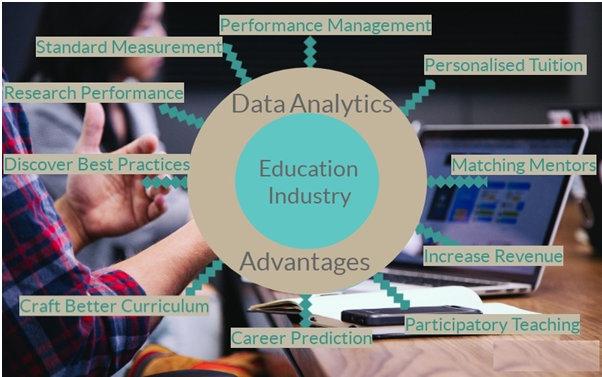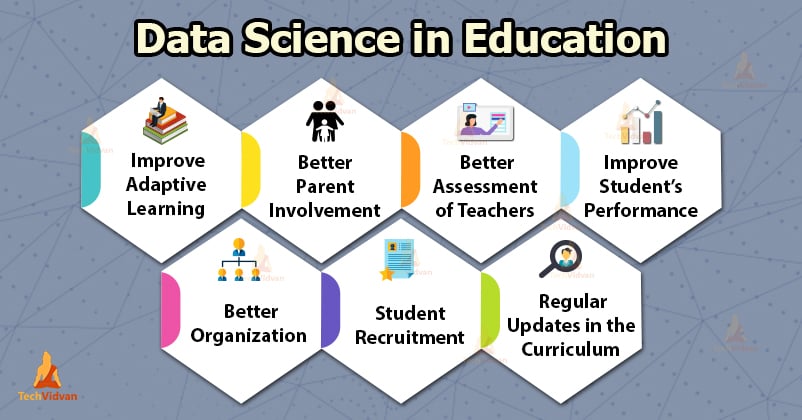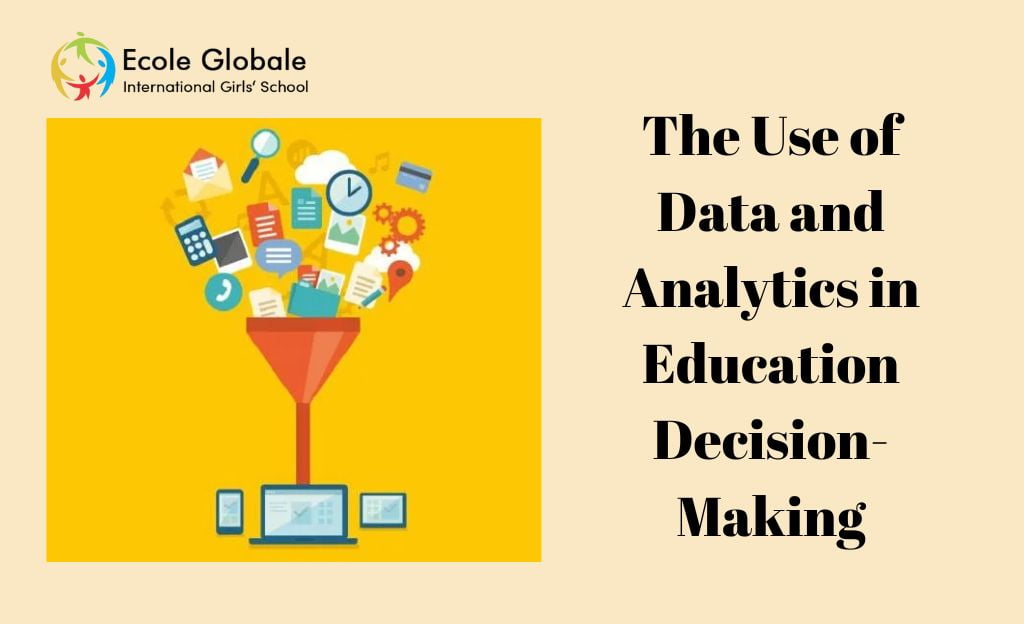Data and analytics in education are everywhere these days. It is a new era of educators using data to make informed decisions. As per research conducted by the Best Boarding Schools in Dehradun, This method starts at the heart of faculty and goes beyond the classroom into areas such as admissions and recruitment. Education is not just about knowing facts but also about applying what you know.
Data and analytics are commonly used in the corporate world to make data-driven, evidence-based decisions. From a business perspective, it is a rational strategy to base decisions on evidence from previous events, trends, and patterns. When such information is obtained quickly and efficiently, it can help in knowing how to proceed when entering a new environment, market segment, or in this case, an education context with new teaching modules or curricula.
Data and analytics in education
Data is information that is represented in a way that a computer can process. It has been called the “raw material” of business, collected and analyzed to produce the information necessary for business decisions.
Data-driven decision-making

Data-driven decision-making is standard practice in many organizations. Data is collected and analyzed for a variety of decision types. Technology makes it easier to collect and use data.
Teaching and learning analytics

Educators have traditionally relied on their instincts, experience, and a bit of luck. Data and analytics in education for Teachers ready to use data in aid decision-making. Using data in educational decision-making can help educators find what works.
The term “data” refers to information about a student’s academic performance in education. It includes standardized test scores and other measures like grades, attendance records, disciplinary reports, and teacher observations. Data can be used to determine which students need extra help to succeed in school and which teachers are performing well enough to deserve raises or tenure.
Data can provide information on student performance and help educators to identify areas where they need to improve. Data and analytics in education can also help them understand why students perform better or worse than expected. It allows them to make targeted improvements that will have an efficient impact on outcomes.
Data and analytics in education are becoming more important in decision-making. Data is used to measure student learning and inform schools, districts, and states looking for ways to use data to improve outcomes for all students.
How to use data and analytics in education?

Another survey done by Top Schools in India shows that Data is an important part of Data and analytics in education. However, there is a growing concern that not enough attention is given to ensuring that the data used is reliable. As such, educators need to understand how to use data wisely and how to ensure its reliability.
Data collection
The first step in using data in education is collecting it. We need to collect information on our students to understand what they learn and do outside school. We also need to collect information on our teachers to understand their strengths and areas where they need support or training. The information can then be used to make better instructional decisions. It will lead to better student outcomes (e.g., increased graduation rates).
Analytics
Once we have collected data on students and teachers, we need to analyze this information to make informed decisions about how best to use it going forward (e.g., identifying gaps in instruction between groups of students). This process requires using statistical tools like regression analysis or predictive analytics software.
- Give students the tools they need to make informed decisions by showing them how they can combine information from multiple sources into one “master source” of information using computers. It might include spreadsheets or databases, and other research tools. The more students learn about how information is gathered and presented online, the better they have at being able to identify its biases (and yours).
- In addition, data is useful for identifying trends in student performance over time so that teachers can anticipate changes in student behavior and adapt their teaching style accordingly. It enables them to maximize the potential of each student and the class as a whole.
- You can use it to check your understanding by having students complete a quiz on the content they just learned. You can also use it as feedback for students by asking them to write down their answers before looking at the answer key. This way they will know if they got it right or wrong before they see what the correct answer was.
Data and analytics in education are really powerful when you know how to use them. It can help you make better decisions in your classroom and beyond.
Advantages of using data analytics in education decision-making

- One of the great potentials of data in education is to personalize learning. Though there are many unknowns regarding how our education system will change in the future and with data, we know that it will continue to exist. So, as teachers, we must help students use data to inform their decisions and use it when making our own decisions about teaching practices and curriculum.
- Data is a tool that can be used to make smarter decisions about how schools operate. With more information at our fingertips, we can make informed decisions about which practices are effective and which ones aren’t working as well as they should be.
- Using data in education leads to increased teacher effectiveness and improved student outcomes at all levels of education- from primary school to university degrees.
- It helps to make decisions based on evidence and facts instead of gut feeling or personal opinions.
- It allows the comparison of different schools with each other so that one can see which school is performing better than another. It can help determine which policies work well and which ones don’t work at all.
Improving student outcomes– Student success is a key component of any educational institution’s mission. When students are not succeeding, it can be difficult for an institution to meet its goals and objectives. Data analytics can help educators understand where their students are struggling so they can intervene early on and prevent future problems from occurring.
Ensuring compliance with state regulations- As mentioned above, data helps you understand where your students are struggling. It also helps you meet regulatory requirements from your state government or accrediting agency by providing evidence that you are working with at-risk students who might otherwise not graduate from high school or go on to college. Data helps you stay compliant with these requirements so that you do not lose funding or accreditation privileges.
Greater efficiency – School systems are often overburdened by the sheer number of students they serve each year. Using data analytics allows schools to identify which programs have been successful and which ones need improvement so they can focus on these areas instead of wasting time on ineffective programs or teaching methods that don’t work for certain groups of students.
A better understanding of student needs – Using data analytics can help schools better understand their students’ needs. It can lead to more effective programs that meet those needs. For example, if a school discovers that most students struggle with maths concepts in middle school but not high school, they might develop an intervention program specifically designed for middle school students instead of trying to teach them everything they need to know at once in high school.
Conclusion
Gone are the days when teachers and students relied on rote memorization and subjective grading. In our modern digital world, where information is available easily, teachers have to rely heavily on data and analytics to take part in education decision-making. Our environment and context for learning have changed. There is no time for slow and inaccurate assessment of student learning.
For any queries related to parenting, schooling, or any student-related tips, click here to check out our latest blogs.






